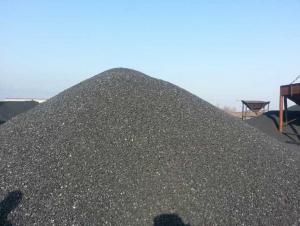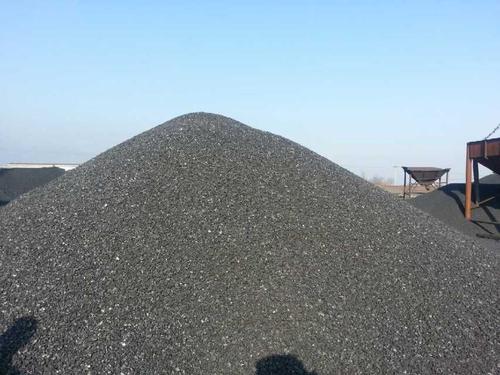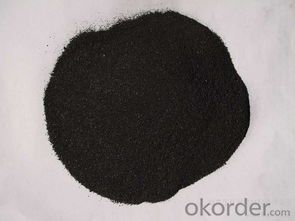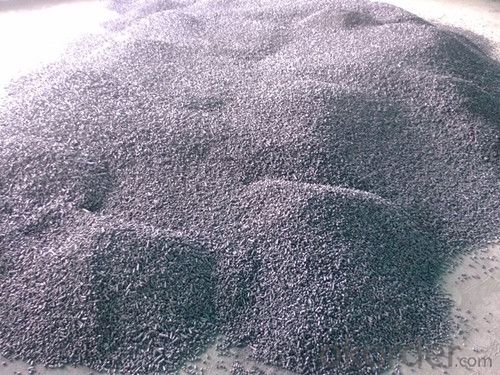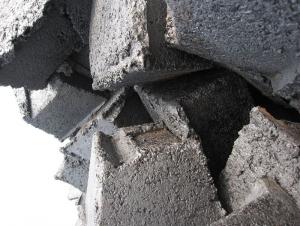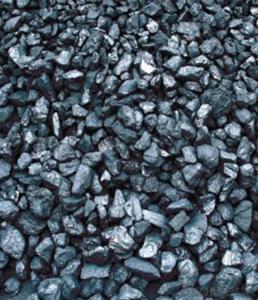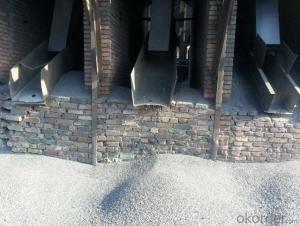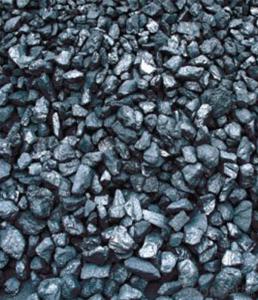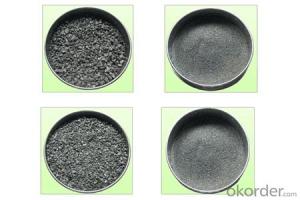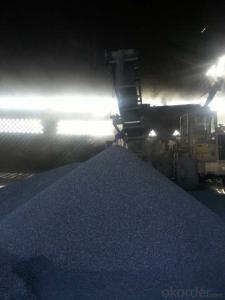FC93 Carbon Additive CNBM China Biggest Supplier
- Loading Port:
- Tianjin
- Payment Terms:
- TT OR LC
- Min Order Qty:
- 0 m.t.
- Supply Capability:
- 100000 m.t./month
OKorder Service Pledge
OKorder Financial Service
You Might Also Like
Packaging & Delivery
Packaging Detail: | 25kgs/50kgs/1ton per bag or as buyer's request |
Delivery Detail: | Within 20 days after receiving corect L/C |
Specifications
Calcined Anthracite
Fixed carbon: 90%-95%
S: 0.5% max
Size: 0-3. 3-5.3-15 or as request
Feature
All of our goods are made in the best quality of world famous Tianjin. All of our products are with High carbon, Low ash, low sulphur, Low Moisture.
Application
The Calcined Anthracite Coal/Gas Calcined Anthracite Coal/Carbon Raiser is mainly used in steelmaking in electrical stove, screening water, shipbuilding sandblast to remove rust. It can reduce the cost of steelmaking effectively by replacing the traditional petroleum coke of carburant.Also can improve the Carbon content in steel-melting and Ductile iron foundry.
Specifications
Calcined Anthracite
Fixed carbon: 90%-95%
S: 0.5% max
Size: 0-3. 3-5.3-15 or as request
PARAMETER UNIT GUARANTEE VALUE | |||||
F.C.% | 95MIN | 94MIN | 93MIN | 92MIN | 90MIN |
ASH % | 4MAX | 5MAX | 6MAX | 7MAX | 8MAX |
V.M.% | 1 MAX | 1MAX | 1.5MAX | 1.5MAX | 1.5MAX |
SULFUR % | 0.5MAX | 0.5MAX | 0.5MAX | 0.5MAX | 0.5MAX |
MOISTURE % | 0.5MAX | 0.5MAX | 0.5MAX | 0.5MAX | 0.5MAX |
Size can be adjusted based on buyer's request.
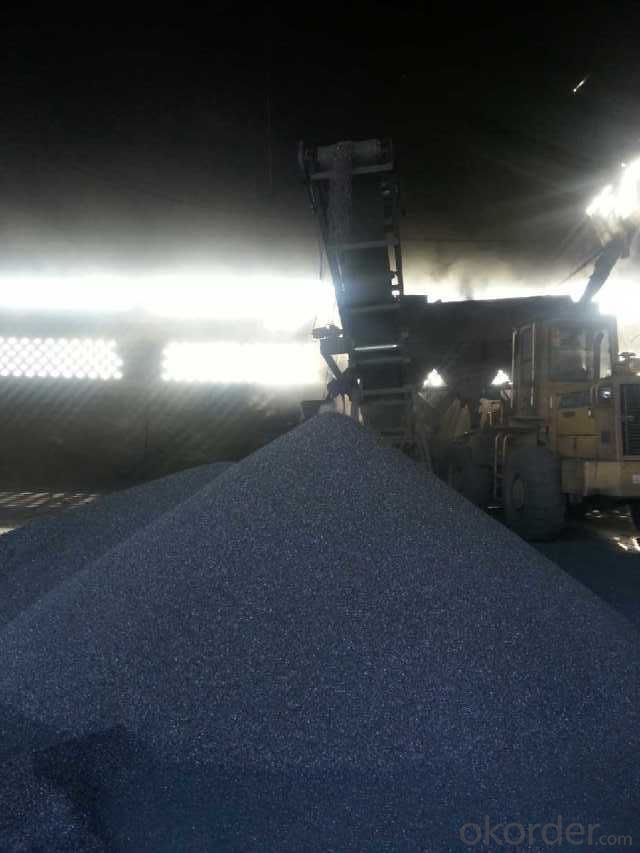

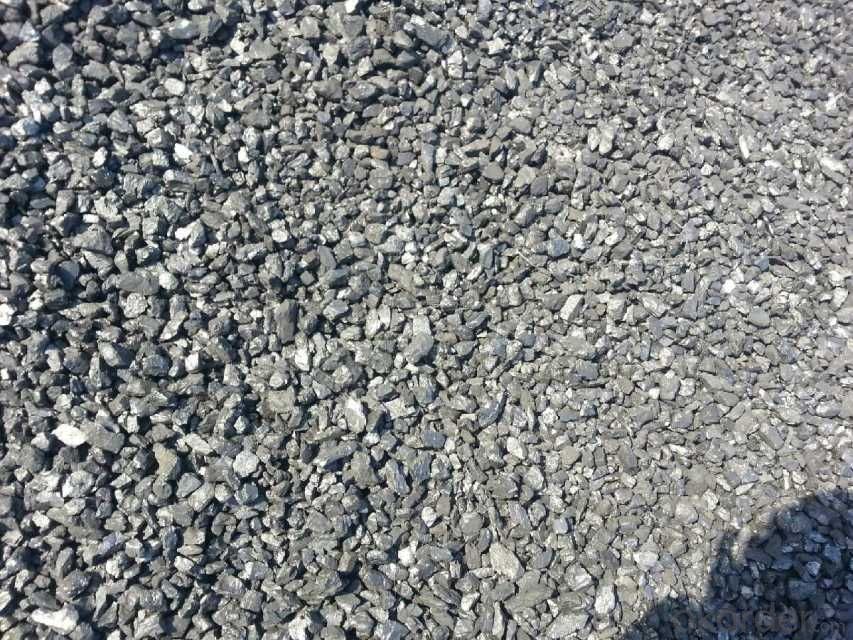
- Q: What is carbon neutral certification?
- The process of carbon neutral certification involves evaluating and verifying organizations, products, or services to ensure they have a carbon footprint that equals zero. This requires taking significant measures to reduce greenhouse gas emissions and offsetting any remaining emissions through the purchase of carbon credits or investments in projects that remove carbon dioxide from the atmosphere. To achieve carbon neutrality, entities undergo a thorough assessment that measures their carbon emissions, sets reduction targets, implements initiatives to reduce their carbon footprint, and tracks progress. After reducing emissions as much as possible, any remaining emissions are offset by investing in verified projects such as reforestation, renewable energy, or energy efficiency projects that reduce greenhouse gases. Certification is conducted by an independent third-party organization to evaluate and verify carbon neutrality claims, ensuring transparency and credibility. Once certified, organizations or products can display the carbon neutral label to demonstrate their commitment to environmental sustainability and responsible carbon management. Carbon neutral certification is crucial as it offers a standardized and recognized method for organizations and products to showcase their dedication to combating climate change. It enables consumers and stakeholders to make informed choices by supporting entities that have taken concrete steps to reduce their carbon emissions and contribute to a more sustainable future. Moreover, carbon neutral certification encourages organizations to adopt sustainable practices and invest in environmentally positive projects, thus hastening the transition to a low-carbon economy.
- Q: How does carbon contribute to global warming?
- Carbon contributes to global warming through the greenhouse effect. When carbon dioxide (CO2) and other greenhouse gases are released into the atmosphere, they trap heat from the sun and prevent it from escaping back into space. This leads to an increase in the Earth's surface temperature, causing global warming. The primary source of carbon emissions is the burning of fossil fuels such as coal, oil, and natural gas for energy production, transportation, and industrial processes. These activities release large amounts of CO2 into the atmosphere, which accumulates over time and enhances the greenhouse effect. Additionally, deforestation and land-use changes also contribute to rising carbon levels. Trees and plants absorb CO2 as part of photosynthesis, acting as a natural carbon sink. However, when forests are cleared, this stored carbon is released back into the atmosphere. Moreover, the loss of trees reduces the overall capacity to absorb CO2, exacerbating the problem. The consequences of increased carbon emissions are far-reaching. Rising temperatures result in the melting of polar ice caps and glaciers, leading to sea-level rise and threatening coastal communities. Furthermore, carbon-driven global warming disrupts weather patterns, causing extreme weather events such as hurricanes, droughts, and heatwaves. To mitigate the impact of carbon on global warming, efforts must be made to reduce carbon emissions. This can be achieved through transitioning to renewable energy sources like solar and wind, improving energy efficiency, promoting sustainable practices in agriculture and forestry, and implementing policies that encourage carbon capture and storage. Addressing carbon emissions is crucial in combating global warming and its associated consequences. By understanding the role of carbon in the greenhouse effect, we can work towards a sustainable future that minimizes the harmful effects of climate change.
- Q: What are the consequences of increased carbon emissions on educational systems?
- Increased carbon emissions have profound consequences on educational systems. One of the major consequences is the negative impact on the health and well-being of students and teachers. Carbon emissions contribute to air pollution, which can lead to respiratory problems, allergies, and other health issues. This, in turn, affects attendance rates and overall student performance. Furthermore, the effects of climate change caused by carbon emissions, such as extreme weather events and rising temperatures, can disrupt educational infrastructure. Schools may be closed or damaged due to hurricanes, floods, or heatwaves, leading to a loss of instructional time and disruption to the learning environment. In addition, increased carbon emissions contribute to the depletion of natural resources, such as water and food, which can have severe consequences for educational systems. In regions heavily reliant on agriculture, climate change can disrupt food production and availability, leading to malnutrition and reduced cognitive development in children. Lack of access to clean water can also impact sanitation in schools, increasing the risk of diseases and impacting students' ability to concentrate and learn. Moreover, the consequences of increased carbon emissions extend beyond physical health and infrastructure. Climate change is a complex global issue that requires an understanding of scientific concepts and critical thinking skills to address. However, inadequate education on climate change and its causes can hinder students' ability to comprehend and respond to this pressing issue. Furthermore, the economic impacts of climate change resulting from increased carbon emissions can strain educational systems. Governments may have to divert resources away from education to address climate-related disasters and their aftermath. Limited funding for education can lead to reduced access to quality education, inadequate facilities, and lower teacher salaries, all of which can negatively impact the overall quality of education provided. In conclusion, increased carbon emissions have wide-ranging consequences on educational systems. From the health and well-being of students and teachers to disruptions in infrastructure and access to resources, the effects of carbon emissions can hinder educational outcomes. Addressing climate change and reducing carbon emissions is crucial not just for the environment but also for the future of education.
- Q: What are the properties of activated carbon?
- Activated carbon, also known as activated charcoal, possesses several unique properties that make it highly versatile and useful in various applications. 1. Adsorption: One of the most significant properties of activated carbon is its high adsorptive capacity. It has a vast internal surface area due to its porous structure, which allows it to effectively adsorb molecules, ions, and impurities from gases, liquids, and solids. This adsorption capability makes it ideal for purification purposes, such as water and air filtration, as well as in the removal of toxins and pollutants from industrial processes. 2. Porosity: Activated carbon has a highly porous structure with a network of interconnected pores. This porosity provides a large surface area, enabling it to trap a significant amount of contaminants. The pores can be classified into three types: micropores (less than 2 nm), mesopores (2-50 nm), and macropores (greater than 50 nm), each contributing to its adsorption capacity. 3. Chemical Stability: Activated carbon exhibits excellent chemical stability, making it resistant to degradation and breakdown when exposed to various chemicals or environments. This property allows it to maintain its adsorption capacity over a long period and under harsh conditions, ensuring its efficiency and longevity in different applications. 4. Selectivity: Activated carbon can be tailored to exhibit selectivity towards specific substances by modifying its surface properties. Through various activation processes, such as physical or chemical treatments, the surface chemistry of activated carbon can be altered to enhance its affinity for certain molecules or contaminants, while reducing its affinity for others. This selectivity makes it an effective material for specific applications, such as removing specific pollutants or capturing desired compounds. 5. Regenerability: Another advantageous property of activated carbon is its regenerability. After reaching its adsorption capacity, it can be regenerated by heating or washing with appropriate solvents, allowing it to be reused multiple times before replacement. This regenerability not only reduces the operational costs but also contributes to its sustainability and eco-friendliness. 6. Low Density: Activated carbon has a relatively low density, making it lightweight and easy to handle. This property enables its use in various systems and devices without adding excessive weight or bulk. 7. Thermal Stability: Activated carbon possesses high thermal stability, allowing it to withstand high temperatures without significant degradation. This property makes it suitable for applications involving high-temperature processes, such as gas purification or catalytic reactions. Overall, the properties of activated carbon, including its adsorption capacity, porosity, chemical stability, selectivity, regenerability, low density, and thermal stability, make it a versatile material widely used in water and air purification, gas separation, chemical processing, pharmaceuticals, and many other industries.
- Q: What are the impacts of carbon emissions on the stability of deserts?
- Carbon emissions have significant impacts on the stability of deserts. One of the key consequences is the exacerbation of desertification, which refers to the process of fertile land turning into desert due to various factors, including climate change. Carbon emissions contribute to global warming, leading to higher temperatures and increased evaporation rates, which in turn result in reduced soil moisture and increased aridity in desert regions. This intensifies the process of desertification, causing deserts to expand and become more unstable. Furthermore, carbon emissions contribute to the alteration of precipitation patterns, which directly affects the stability of deserts. As climate change leads to shifts in weather patterns, some areas may experience reduced rainfall, while others may face more frequent and intense droughts. These changes in precipitation can further exacerbate desertification processes and lead to increased desert instability. Another impact of carbon emissions on desert stability is the increased frequency and intensity of dust storms. As global warming leads to drier conditions and reduced vegetation cover, the risk of dust storms becomes higher. These storms can transport vast amounts of fine particulate matter, including dust and sand, over long distances, resulting in a range of negative consequences. Dust storms can damage infrastructure, harm human health, degrade air quality, and further contribute to desertification processes by removing fertile topsoil. Additionally, the impacts of carbon emissions on deserts are not limited to their ecological stability but also have socio-economic implications. Many communities in desert regions rely on agriculture and natural resources for their livelihoods. The destabilization of deserts due to carbon emissions can lead to reduced agricultural productivity, increased food insecurity, and economic hardship for these communities. Moreover, the displacement of people from desert regions due to desertification can lead to increased migration and social instability. In conclusion, carbon emissions have far-reaching impacts on the stability of deserts. They contribute to the intensification of desertification processes, alter precipitation patterns, increase the frequency and intensity of dust storms, and have socio-economic consequences. Addressing carbon emissions through climate change mitigation strategies is crucial to minimize these impacts and ensure the long-term stability of desert ecosystems and the communities that depend on them.
- Q: How does carbon dioxide affect climate change?
- Carbon dioxide (CO2) affects climate change primarily through the greenhouse effect. When CO2 is released into the atmosphere, it acts as a greenhouse gas, trapping heat from the sun and preventing it from escaping back into space. This phenomenon leads to an increase in global temperatures, known as global warming, and contributes to climate change. The excessive buildup of CO2 in the atmosphere is primarily caused by human activities, such as burning fossil fuels and deforestation, which have intensified the greenhouse effect and accelerated climate change.
- Q: How does carbon affect the formation of volcanic eruptions?
- The formation of volcanic eruptions can be significantly influenced by carbon. One way in which carbon impacts volcanic eruptions is through the degassing process. When magma rises to the surface, it carries dissolved gases, including carbon dioxide. As the magma moves towards the surface and the pressure decreases, the dissolved gases begin to separate, forming gas bubbles within the magma. These gas bubbles can make the magma more buoyant, facilitating its ascent and eventually leading to an eruption. In addition, carbon can also affect the viscosity of magma, which measures its resistance to flow. Magma with higher carbon content tends to have lower viscosity, making it more fluid-like and capable of flowing more easily. This reduced viscosity enables the magma to move more swiftly towards the surface, increasing the chances of an eruption. Moreover, carbon can contribute to the explosiveness of volcanic eruptions. When magma reaches the surface, it can come into contact with organic matter, such as plant material or fossil fuels, which contain abundant carbon. This interaction can result in the combustion of the organic matter, releasing additional gases like methane. These gases can further elevate the pressure within the volcano, leading to more explosive eruptions. In summary, carbon plays a crucial role in the formation of volcanic eruptions. It influences the buoyancy and viscosity of magma and can contribute to the explosiveness of eruptions. Understanding the impact of carbon in volcanic processes is vital for predicting and mitigating the risks associated with volcanic activity.
- Q: What's the difference between blue and red Panasonic batteries (carbon)?
- Blue is leak, proof, general, Purpose, general use battery (leak proof)Red is the long life long life battery (suitable for watches and clocks and other small power appliances)And heavy duty green seems to be good for high power appliances, such as toy cars
- Q: What is carbon fiber and how is it used?
- Made from thin strands of carbon atoms bonded together in a specific pattern, carbon fiber is a material that is both lightweight and incredibly strong. Its exceptional strength-to-weight ratio surpasses that of steel, while its weight is significantly lighter. The unique properties of carbon fiber make it widely used across various industries and applications. In the aerospace industry, it is a common choice for constructing aircraft components such as wings, fuselage sections, and engine parts. Its strength and lightness contribute to better fuel efficiency and overall performance. The automotive industry heavily relies on carbon fiber for manufacturing high-performance vehicles. Carbon fiber reinforced composites are utilized in the production of body panels, chassis components, and interior trims. By reducing the overall weight of vehicles, carbon fiber not only enhances structural integrity but also improves handling and fuel efficiency. Sports equipment manufacturers also incorporate carbon fiber into the production of sporting goods like tennis rackets, golf clubs, bicycles, and hockey sticks. The material's strength and stiffness result in improved performance, increased power transfer, and enhanced durability. Additionally, carbon fiber finds applications in the construction industry for reinforcing concrete structures, as well as in the manufacturing of wind turbine blades, boat hulls, and various other industrial components. Overall, carbon fiber is the preferred choice in industries requiring high-performance materials due to its exceptional strength, lightweight nature, and versatility. As advancements in manufacturing techniques and cost reduction efforts continue, its use is expanding to a wider range of applications.
- Q: How does carbon dioxide affect the pH of seawater?
- Carbon dioxide reacts with seawater to form carbonic acid, which lowers the pH of the water, making it more acidic. This process is known as ocean acidification and has significant impacts on marine life and ecosystems.
Send your message to us
FC93 Carbon Additive CNBM China Biggest Supplier
- Loading Port:
- Tianjin
- Payment Terms:
- TT OR LC
- Min Order Qty:
- 0 m.t.
- Supply Capability:
- 100000 m.t./month
OKorder Service Pledge
OKorder Financial Service
Similar products
Hot products
Hot Searches
Related keywords
